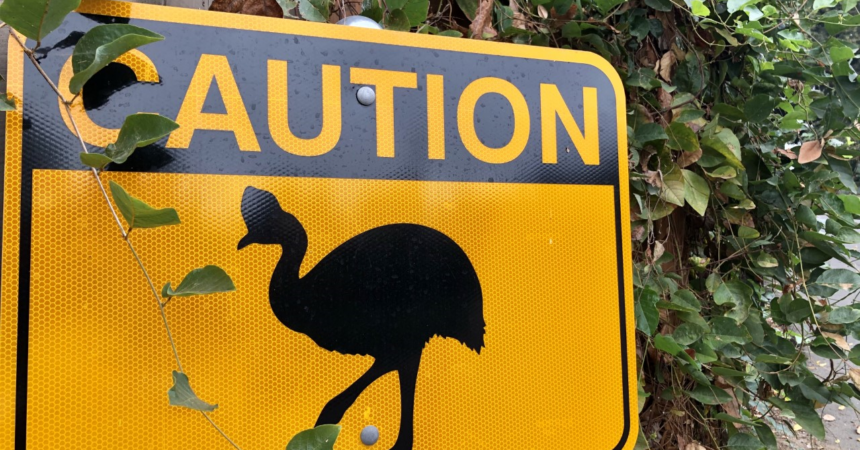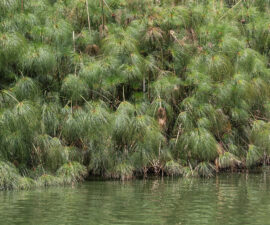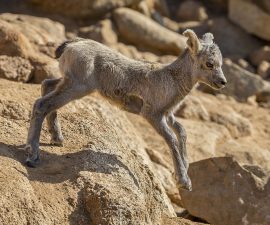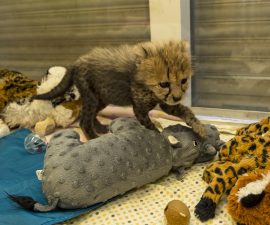September 25 is World Cassowary Day, so we’re sharing insight from our animal care specialists that care for these amazing birds.
A glimpse of the creature reveals a brightly colored head and neck; more skin than feathers, in a range of vivid blues and reds. With a helmet-like, bony protrusion on top of its head, it stealthily moves through the dense forest (at speeds up to 30 MPH) carried by muscular legs and enormous, scaly, 3-toed feet, each equipped with a dagger-like claw on the inside toe. A deep, vibrating boom radiates from the belly of the beastie—a sound felt as much as it is heard.
It’s obvious that this is no ordinary bird.
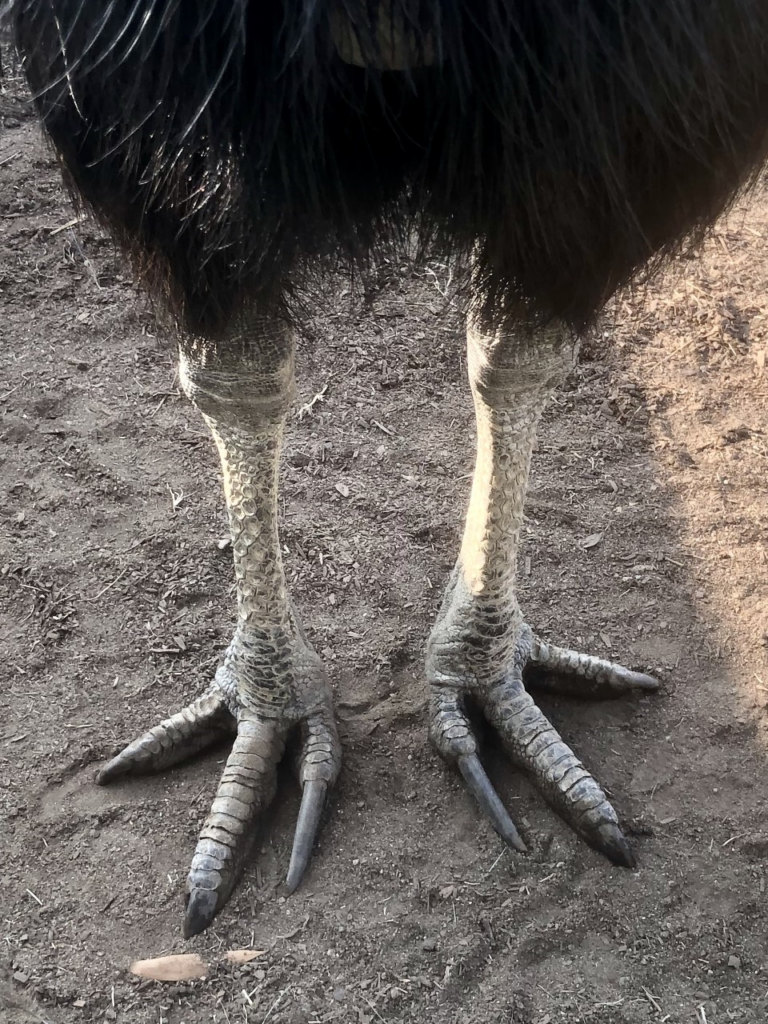
Reminiscent of a particular predatory dinosaur from a certain Hollywood blockbuster (#BirdsAreDinosaurs) an adult southern cassowary can reach 6 feet in height and weigh as much as 165 pounds. And few birds are quite so adept at projecting a “go ahead, make my day” face as effectively as a cassowary Yet despite the ‘ferocious’ appearance, the southern cassowary is shy by nature and faces far bigger threats from humans than we do from them.
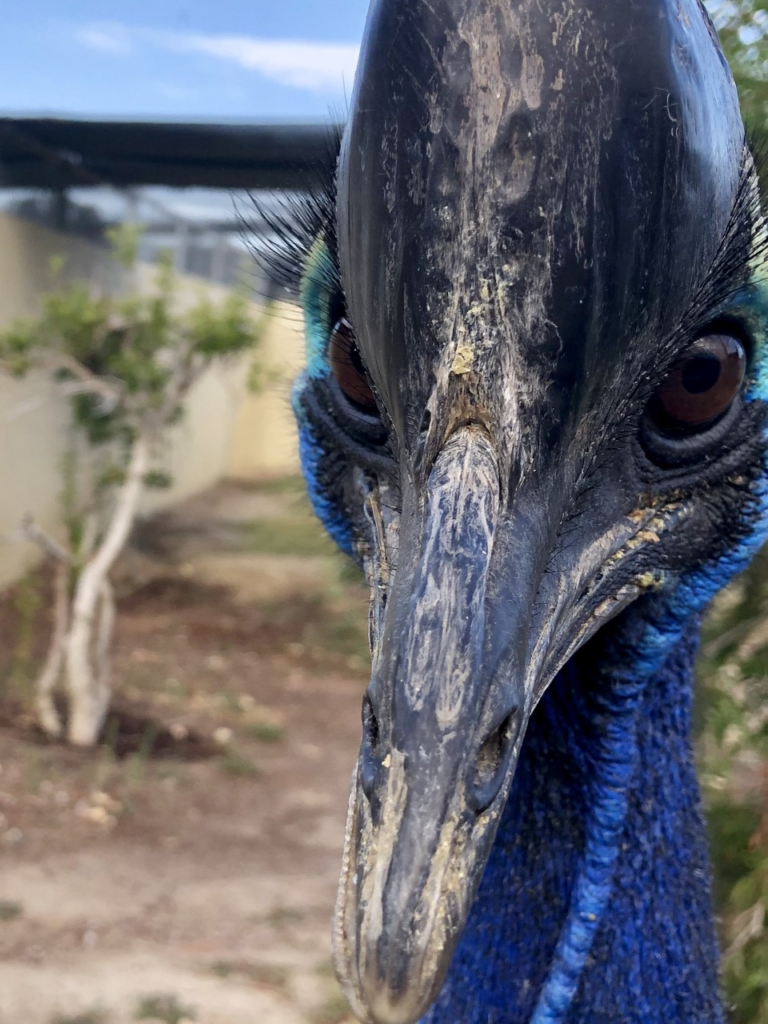
The threats that we need to be casso-wary of:
- Habitat loss and forest fragmentation: It is estimated that only 20 to 25 percent of the cassowary’s original habitat remains as a result of farming, urban development, logging and the construction of roads. Much of what does remain continues to be under pressure from further development.
- Traffic: Why did the cassowary cross the road? Roads cut through cassowary territories and have proven deadly to birds crossing in search of food or simply looking to get to the other side. Vehicle strikes are the leading cause of death in some areas.
- Dog attacks: Unrestrained and feral dogs are a threat to chicks and juveniles while packs of feral dogs are able to take down an adult bird.
- Humans: In addition to illegal trapping and shooting, birds that become conditioned to being fed by people are more likely to find themselves in urban areas with all the associated dangers.
- Feral pigs: Originally introduced by early European settlers, there are now an estimated 24 million feral pigs in Australia. These animals compete with the cassowary for food and gladly consume their eggs and chicks. They are also detrimental to the forest itself, causing damage to the topsoil by digging and in the process destroying vegetation.
- Disease: Things such as aspergillosis, avian TB, and parasites are nothing new to the rain forest ecosystem, but birds under stress due to food shortages or the presence of predators are more likely to succumb to disease.
- Natural disasters: Cyclones in particular, while not a new threat, have increased in frequency and intensity due to climate change.
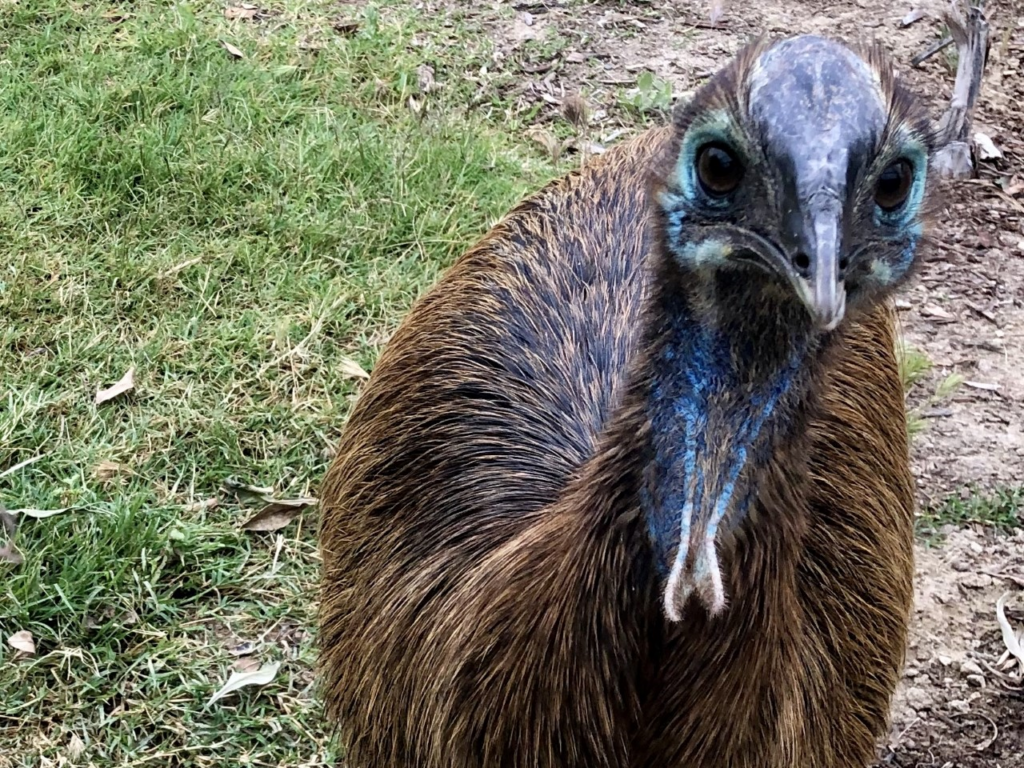
Found in northeastern Australia, New Guinea and a few neighboring islands the elusive nature of the cassowary, combined with low population densities, rough terrain, and often remote locations make the total global number of these birds difficult to ascertain. It is estimated that 4,000-4,600 southern cassowary remain in the wilds of Australia and the Australian government has classified their population as nationally endangered.
Now, before you get too casso-worried (*wink*), know that much is being done in Australia to save these birds from extinction. Partnerships between government agencies, non-profit organizations, businesses, and local residents are committed to saving this iconic species through community engagement, threat abatement, and improved habitat protection. Volunteer groups have even established nurseries of cassowary food plants to help restore rain forest habitat on cleared land and to create corridors to link remaining patches of vegetation.
Why is this all important? In addition to the cultural significance to the indigenous peoples of the Australian continent, the cassowary is considered to be a keystone species; their role as seed dispersers is critical to the overall health and structure of the rain forest ecosystem which they inhabit. In their absence, this ecosystem would be dramatically different, or cease to exist entirely, thereby affecting countless species of plants and animals.
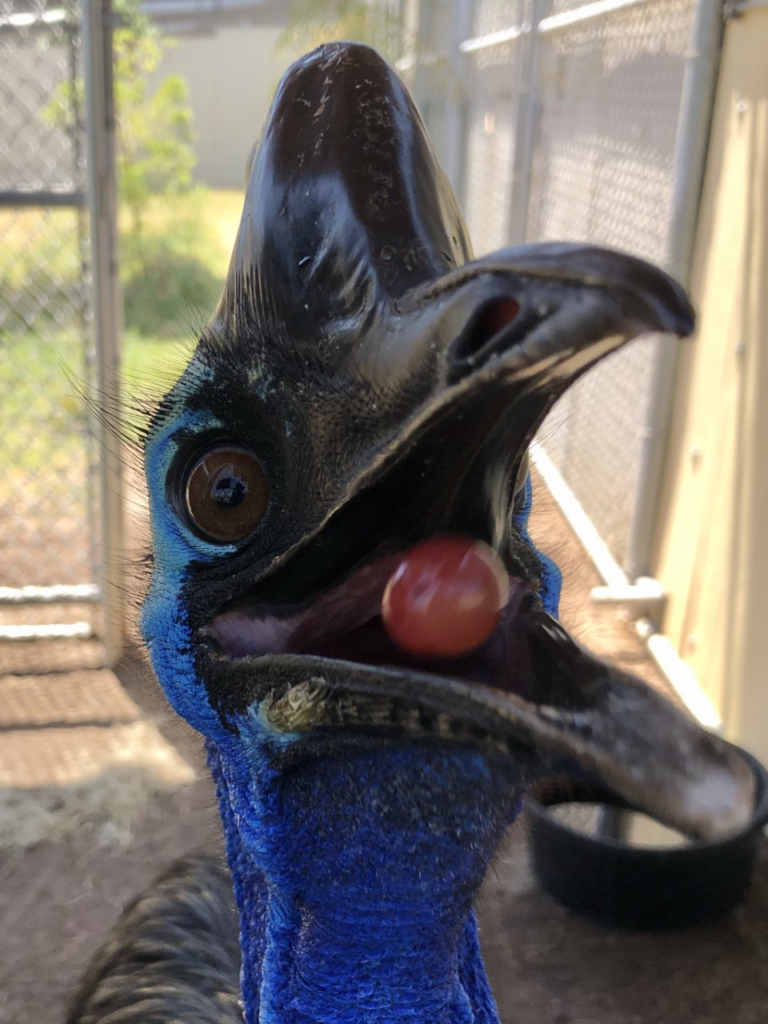
What can you do to help? Supporting zoos that participate in research, education, and managed breeding programs is critical to ensuring the survival of this species. Another easy way to do your part is to simply pass along what you’ve learned about these amazing birds. People won’t conserve what they don’t know or care about.
Our southern cassowaries can be seen daily in their beautiful, feral pig-free habitat in Walkabout Australia at the San Diego Zoo Safari Park.
Terri Haines is a senior avian care specialist at the San Diego Zoo Safari Park.

